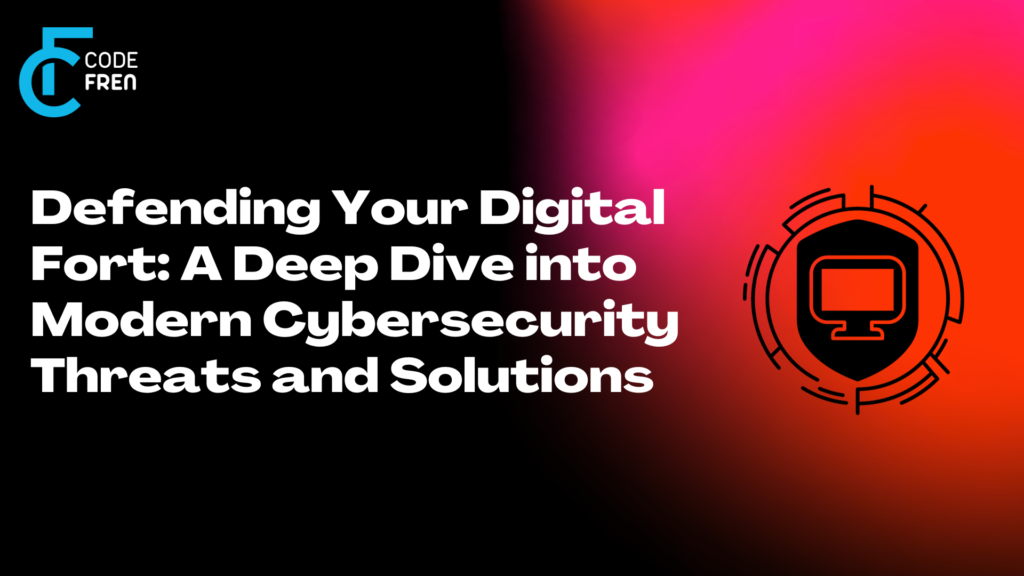A deep dive into modern cybersecurity threats and solutions. In today’s interconnected world, businesses rely heavily on digital assets and information. However, with the increasing sophistication of cybercriminals, safeguarding these assets has become a top priority. This blog will delve into the latest cybersecurity threats that organizations face and offer actionable insights to protect their digital fortresses. This blog is about a deep dive into modern cybersecurity threats and solutions
Understanding the Modern Cybersecurity Threats and Solutions
Cybersecurity threats are evolving at an alarming pace, and it’s crucial to stay informed about the latest trends. One prominent threat is ransomware, where attackers encrypt vital data and demand a ransom for its release. High-profile cases, such as the Colonial Pipeline attack, highlight the crippling impact of ransomware on critical infrastructure.
Phishing attacks, another prevalent threat, involve deceptive emails or messages that lure individuals into revealing sensitive information. Even the most cautious employees can fall victim to these well-crafted schemes.
Actionable Tips for Cybersecurity Defense
Now, let’s explore actionable tips and strategies to fortify your defenses against these and other cybersecurity threats:
1. Employee Training and Awareness:
- Conduct regular cybersecurity training for all employees.
- Teach them to recognize phishing attempts and avoid clicking on suspicious links.
2. Robust Endpoint Protection:
- Implement advanced antivirus and anti-malware solutions on all devices.
- Configure firewalls to filter out malicious traffic.
3. Regular Software Updates:
- Keep operating systems, software, and applications up to date with the latest security patches.
4. Multi-Factor Authentication (MFA):
- Enable MFA wherever possible to add an extra layer of security to login processes.
5. Secure Backup and Recovery:
- Regularly back up critical data and store it offline or in secure, isolated environments.
- Develop a comprehensive incident response plan to minimize downtime in case of an attack.
6. Network Segmentation:
- Divide your network into segments to limit the lateral movement of attackers.
- Implement strict access controls for sensitive areas.
7. Email Filtering and Authentication:
- Employ email filtering solutions to catch phishing emails before they reach inboxes.
- Implement Domain-based Message Authentication, Reporting, and Conformance (DMARC) to authenticate email senders.
8. Continuous Monitoring and Threat Intelligence:
- Utilize cybersecurity tools for continuous monitoring of network activities.
- Stay updated on the latest threat intelligence to proactively defend against emerging threats.
9. Encryption:
- Encrypt sensitive data both in transit and at rest to protect it from unauthorized access.
10. Incident Response Team:
– Establish a dedicated incident response team with defined roles and responsibilities.
– Conduct regular drills to test incident response procedures.
Learn from Others
Several organizations have faced cybersecurity threats head-on and come out stronger. Apple successfully thwarted a ransomware attack by promptly isolating affected systems and restoring data from secure backups. Google shares insightful resources on phishing prevention that have been effective for their workforce.
Conclusion
In today’s digital landscape, cybersecurity threats are a constant menace. However, by staying informed about the latest threats and implementing proactive security measures, businesses can bolster their defenses. Remember that cybersecurity is an ongoing process, and vigilance is key to safeguarding your digital assets. Stay safe, stay secure, and stay one step ahead of cybercriminals. Get in touch with us today to get your product secured from these cyber threats






